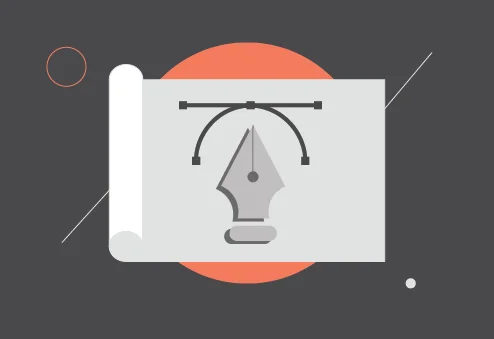When it comes to SEO, there are three types of tactics: white hat, black hat, and grey hat. While white hat tactics are ethical and follow search engine guidelines, black hat tactics are unethical and violate those guidelines. Grey hat tactics, on the other hand, fall somewhere in between. They are not necessarily illegal, but they may not be entirely ethical either.
Grey hat SEO tactics can be a risky strategy to implement. While they may provide short-term gains, they can also result in long-term damage to your website’s reputation and rankings.
In this article, we’ll be discussing some top Grey Hat SEO Tactics.
So, let’s dive into this.
What Is Grey Hat SEO?
Grey hat SEO refers to a set of search engine optimization tactics that fall somewhere between white hat and black hat SEO techniques. While white hat SEO tactics follow search engine guidelines and black hat SEO tactics manipulate them, grey hat SEO tactics are ambiguous and may or may not violate search engine guidelines.
Grey hat SEO techniques are often used by website owners who want to improve their search engine rankings quickly but without resorting to black hat SEO tactics that could result in penalties from search engines like Google. However, grey hat SEO tactics can still be risky and may result in penalties if search engines deem them to be manipulative or in violation of their guidelines.
Grey Hat SEO Techniques

Here are some top grey hat SEO tactics include:
Expired Domain Redirects [#1]
Expired domain redirects are a grey hat SEO tactic that involves purchasing an expired domain with a good backlink profile and redirecting it to your website. This tactic can be effective in boosting your website’s ranking in search engine results pages (SERPs), but it does come with some risks.
From a black hat SEO perspective, expired domain redirects can be used to manipulate search engine rankings by redirecting a domain with a high authority to a website that may not have earned that authority organically. However, if done ethically and according to best practices, this tactic can be a legitimate strategy to improve your website’s ranking.
When using expired domain redirects, it’s important to ensure that the domain you’re purchasing has a good backlink profile and is relevant to your website’s niche. You should also check if the domain has any penalties or negative history that could harm your website’s ranking.
It’s important to note that using expired domain redirects is not in line with Google’s webmaster guidelines. Google has stated that using this tactic solely for the purpose of manipulating search engine rankings is considered a violation of their guidelines. However, if you’re using this tactic to improve your website’s authority and relevance, it can be an effective strategy.
Expired domain redirects can be a grey hat SEO tactic that can be effective in boosting your website’s ranking, but it does come with some risks. If you decide to use this tactic, make sure to do it ethically and according to best practices, and always keep Google’s webmaster guidelines in mind.
Article Spinning
Article spinning is a Grey Hat SEO tactic that involves taking an existing article and rewording it to create new content. The idea is to create multiple versions of the same article and then submit them to different article directories or other websites to generate backlinks.
While article spinning may seem like a quick and easy way to generate content, it is considered a Black Hat SEO tactic by Google and can result in penalties if detected. This is because spun articles are often of low quality and provide little value to readers.
If you choose to use article spinning as part of your SEO strategy, it is important to do so ethically and responsibly. This means creating high-quality, original content that provides value to your readers, and avoiding the use of automated spinning tools that can produce low-quality content.
It is also important to follow Google’s Webmaster Guidelines and avoid any tactics that are considered Black Hat or unethical. This includes avoiding keyword stuffing, cloaking, and other tactics that are designed to manipulate search engine rankings.
While article spinning can be a useful Grey Hat SEO tactic, it should be used with caution and only as part of a larger, ethical SEO strategy. By creating high-quality, original content and following best practices, you can use article spinning to generate backlinks and improve your search engine rankings without risking penalties from Google.
Link Purchasing
One of the controversial tactics in the SEO world is link purchasing. This is a grey hat SEO technique that involves buying links from other websites to improve your search engine ranking.
While link purchasing can be tempting to get quick results, it is not an ethical strategy and goes against Google Webmaster Guidelines. Google considers buying links as a black hat SEO technique and can penalize your website for it.
Link purchasing can also be expensive, and there is no guarantee that the links you buy will be of high quality or relevant to your website.
Instead of resorting to link purchasing, it is best to focus on white hat SEO techniques such as creating high-quality content, building relationships with other websites, and earning links organically. These practices are in line with Google Webmaster Guidelines and are more sustainable in the long run.
Keyword Stuffing
Keyword stuffing is a Grey Hat SEO tactic that involves overusing keywords on a page to manipulate search engine rankings. This practice involves adding an excessive number of keywords to a webpage’s content, meta tags, and other on-page elements. Keyword stuffing is a technique that was commonly used in the past to manipulate search engine rankings, but it is now considered a Black Hat SEO tactic and can result in penalties from search engines.
Keyword stuffing was once considered a legitimate SEO strategy, but search engines have since updated their algorithms to penalize websites that use this technique. Google’s Webmaster Guidelines specifically state that keyword stuffing is a violation of their guidelines and can result in a penalty.
While keyword stuffing may increase a website’s visibility in search engine results pages (SERPs), it can also result in a poor user experience. Pages that are stuffed with keywords often lack readability and are difficult to understand. This can lead to a high bounce rate, which can negatively impact a website’s search engine rankings.
In addition to negatively impacting user experience, keyword stuffing is also considered an unethical SEO practice. It goes against White Hat SEO best practices, which prioritize creating high-quality content that is relevant and useful to users. Instead, keyword stuffing prioritizes search engine rankings over user experience and can result in a poor reputation for a website.
Overall, keyword stuffing is a Grey Hat SEO tactic that is not recommended. Instead, focus on creating high-quality content that is relevant and useful to users. By following White Hat SEO best practices and Google’s Webmaster Guidelines, you can create a successful SEO strategy that prioritizes user experience and ethical practices.
Cloaking
Cloaking is a grey hat SEO tactic that involves showing different content to search engines and users. Essentially, it involves presenting one version of a page to search engines and another version to users. This is done to manipulate search engine rankings by showing search engines content that is different from what users see.
Cloaking can be done in a number of ways, such as using IP addresses to identify search engine crawlers and serving them different content, or using JavaScript to redirect users to a different page than the one they clicked on in search results.
While cloaking can be an effective way to manipulate search engine rankings, it is considered a black hat tactic and is against Google’s webmaster guidelines. If you are caught using cloaking, your site may be penalized or even banned from search results.
It is important to note that not all forms of cloaking are unethical or against Google’s guidelines. For example, serving different content to users based on their location or device type is considered acceptable as long as it is done in a way that is transparent to both users and search engines.
In general, it is best to avoid using cloaking as a strategy for improving search engine rankings. Instead, focus on ethical white hat SEO techniques that comply with Google’s guidelines and best practices.
Clickbait Titles and Meta Descriptions
When it comes to SEO, clickbait titles and meta descriptions are considered grey hat tactics. Clickbait titles are designed to grab the attention of the reader and entice them to click on a link, often by making exaggerated or false claims. Meta descriptions, on the other hand, are the short snippets of text that appear below the title in search engine results pages (SERPs) and are intended to provide a brief summary of the content on the page.
While clickbait titles and meta descriptions can increase click-through rates, they can also result in high bounce rates and low engagement. This can negatively impact your SEO efforts, as search engines like Google prioritize user experience and engagement when ranking pages.
In addition, clickbait titles and meta descriptions can be seen as unethical and not in line with best practices and Google’s webmaster guidelines. It’s important to prioritize creating high-quality content that provides value to your audience and accurately represents what is on the page.
Here are some tips for creating effective titles and meta descriptions while still adhering to best practices:
- Use clear and concise language that accurately represents the content on the page.
- Avoid making exaggerated or false claims.
- Incorporate relevant keywords in a natural way.
- Provide a clear and compelling reason for the reader to click on the link.
- Keep titles under 60 characters and meta descriptions under 155 characters to ensure they display properly in SERPs.
By following these best practices, you can create titles and meta descriptions that effectively represent your content and encourage clicks without resorting to clickbait tactics.
Social Media Automation
Social media automation is a grey hat SEO tactic that involves using tools to automate social media tasks such as posting, liking, commenting, and following. While this technique can save time, it can also be risky if not used correctly.
Using social media automation tools to engage with your audience can be a great way to increase your reach and build your brand. However, it’s important to note that excessive automation can be viewed as spammy and could result in penalties from search engines.
To avoid penalties, it’s important to follow best practices and guidelines set forth by search engines. This means using automation tools responsibly and ethically, and not engaging in any black hat tactics such as buying followers or likes.
When using social media automation, it’s important to keep your content relevant and engaging. Avoid using generic or spammy messages and instead focus on creating high-quality content that resonates with your audience.
Social media automation can be a useful tool for SEO, but it should be used responsibly and ethically. By following best practices and guidelines set forth by search engines, you can avoid penalties and build a strong online presence.
Negative SEO Attacks
Negative SEO attacks are a type of Grey Hat SEO tactic that involves using unethical methods to harm a competitor’s website’s search engine rankings. This can be achieved by using a variety of tactics, including:
- Building spammy backlinks to the competitor’s website
- Creating duplicate content and publishing it on low-quality websites
- Hacking the competitor’s website and injecting malicious code or malware
- Reporting the competitor’s website to Google for violating webmaster guidelines
These tactics are considered unethical and can result in severe penalties from Google, including a drop in search engine rankings or even a complete removal from search results.
It’s important to note that negative SEO attacks are not a recommended strategy for improving your own website’s search engine rankings. Instead, focus on ethical and best practices for SEO, such as creating high-quality content, building natural backlinks, and following Google’s webmaster guidelines.
If you suspect that your website has been a victim of negative SEO attacks, it’s important to take action immediately. This may include disavowing spammy backlinks, removing duplicate content, and securing your website against potential hacks or malware infections.
Negative SEO attacks are a dangerous and unethical Grey Hat SEO tactic that should be avoided at all costs. Stick to ethical and best practices for SEO, and focus on improving your own website’s search engine rankings through high-quality content and natural backlinks.
Review Gating
Review gating is a gray hat SEO tactic that involves selectively soliciting reviews from customers to avoid negative reviews from being posted publicly. This practice is considered unethical by Google and violates their webmaster guidelines.
Review gating is a process where businesses use software to filter out negative reviews before they are posted online. This is usually done by sending an email to customers after they make a purchase, asking them to rate their experience. If the customer rates the experience positively, they are asked to leave a review on the business’s website or social media page. If the customer rates the experience negatively, they are asked for feedback but not prompted to leave a review.
This practice is considered unethical because it skews the overall rating of a business and prevents customers from seeing negative reviews. Google has explicitly stated that review gating violates their guidelines and can result in penalties for businesses that use this tactic.
In contrast, white hat SEO practices involve following ethical guidelines and best practices to improve a website’s ranking in search engine results pages. Black hat SEO practices involve using unethical tactics to manipulate search engine rankings. Gray hat SEO tactics, like review gating, fall somewhere in between these two extremes.
Overall, the best practice for businesses is to encourage all customers to leave reviews, whether positive or negative. This allows potential customers to make informed decisions about the quality of the business’s products or services. By following ethical practices and avoiding gray hat SEO tactics like review gating, businesses can improve their online reputation and attract more customers.
Is Grey Hat SEO Illegal?

Grey hat SEO tactics are those that fall somewhere between the ethical practices of white hat SEO and the unethical practices of black hat SEO. While some of these tactics may be considered questionable, they are not necessarily illegal. However, it’s important to note that just because something is not illegal does not mean it’s ethical or in line with best practices.
Google’s Webmaster Guidelines clearly state that any tactics used to manipulate search engine rankings are considered against their guidelines. This includes grey hat SEO tactics that may not necessarily be illegal. Google’s algorithms are designed to detect and penalize websites that use these tactics to manipulate rankings.
Using grey hat SEO tactics can be risky, as they may result in penalties from search engines. This can lead to a decrease in rankings, loss of traffic, and ultimately harm your website’s reputation. It’s important to consider the long-term consequences of using these tactics before implementing them in your SEO strategy.
It’s important to consider the risks and potential consequences before implementing any questionable tactics in your SEO strategy. Stick to white hat SEO tactics and follow Google’s Webmaster Guidelines to ensure a long-term, sustainable SEO strategy.
Grey Hat SEO and Search Engine Guidelines
When it comes to SEO, it’s essential to follow the guidelines set forth by search engines like Google. These guidelines are designed to ensure that websites are optimized in a way that is fair and beneficial to everyone involved. However, some SEO practitioners may choose to use “grey hat” tactics that fall somewhere between the white hat (ethical) and black hat (unethical) spectrum.
While grey hat SEO techniques may not be explicitly against search engine guidelines, they do push the boundaries and can potentially result in penalties or lower search rankings. It’s important to understand the risks involved with grey hat SEO and make informed decisions about which tactics to use.
One common grey hat SEO tactic is buying or exchanging links to improve PageRank. While Google’s guidelines state that buying or selling links that pass PageRank is against their policy, some SEO practitioners still engage in this practice. However, it’s important to note that this can result in penalties or even a loss of PageRank for the website.
Another grey hat tactic is keyword stuffing, which involves overusing keywords in an attempt to manipulate search rankings. While it may be tempting to use this technique to improve your website’s visibility, it’s important to remember that it can result in penalties and lower search rankings.
Ultimately, it’s up to you to decide which SEO tactics to use. However, it’s important to be aware of the risks involved with grey hat techniques and make informed decisions based on your goals and the guidelines set forth by search engines.
Is Grey-Hat SEO Safe?
When it comes to SEO, the line between “white-hat” and “black-hat” tactics is often blurred. Grey-hat SEO tactics fall in the middle of this spectrum and can be seen as a risky approach to SEO. While some grey-hat tactics can be safe, others can lead to severe penalties from search engines.
It is important to approach SEO in a natural and organic way and avoid manipulative tactics. While some grey-hat tactics may seem like a quick solution, they can have long-term consequences for your website’s search engine rankings.
Check out Also White Hat SEO Hacks
Conclusion
Grey Hat SEO tactics can be an effective way to boost your website’s search engine ranking, but they come with a level of risk. While these tactics may provide short-term gains, they can also result in long-term consequences such as penalties or even getting your website banned from search engines.
It is important to understand that search engines are constantly updating their algorithms to detect and penalize websites that use manipulative tactics to rank higher. Therefore, it is crucial to stay up-to-date with the latest SEO techniques and trends.
When it comes to building backlinks, it is important to focus on quality over quantity. Building backlinks from reputable sources can help improve your website’s authority and credibility, while low-quality backlinks can have the opposite effect.
Overall, it is important to approach SEO with a long-term mindset and focus on creating high-quality content that provides value to your audience. By doing so, you can build a strong online presence and improve your website’s search engine ranking without resorting to risky Grey Hat SEO tactics.





